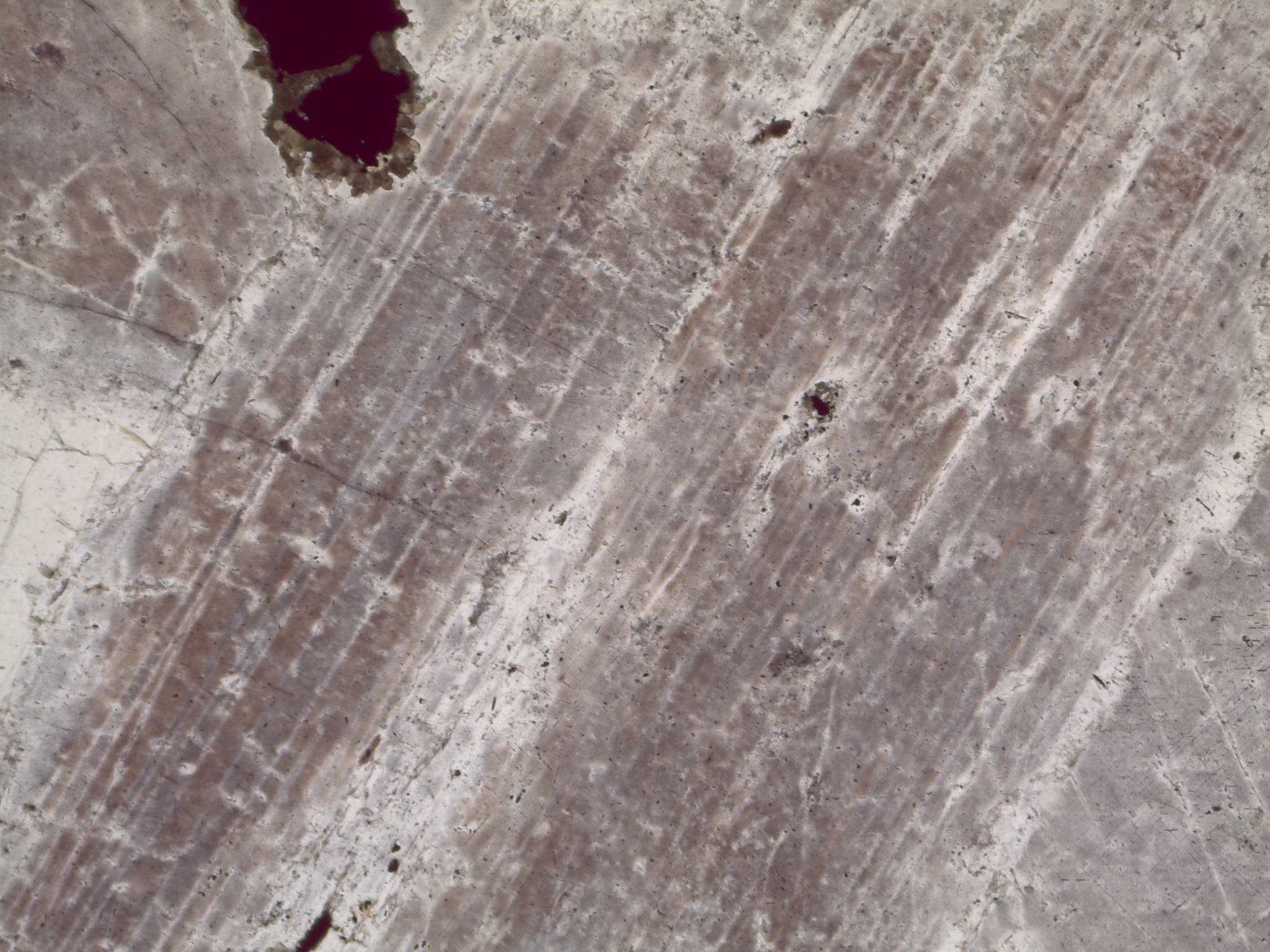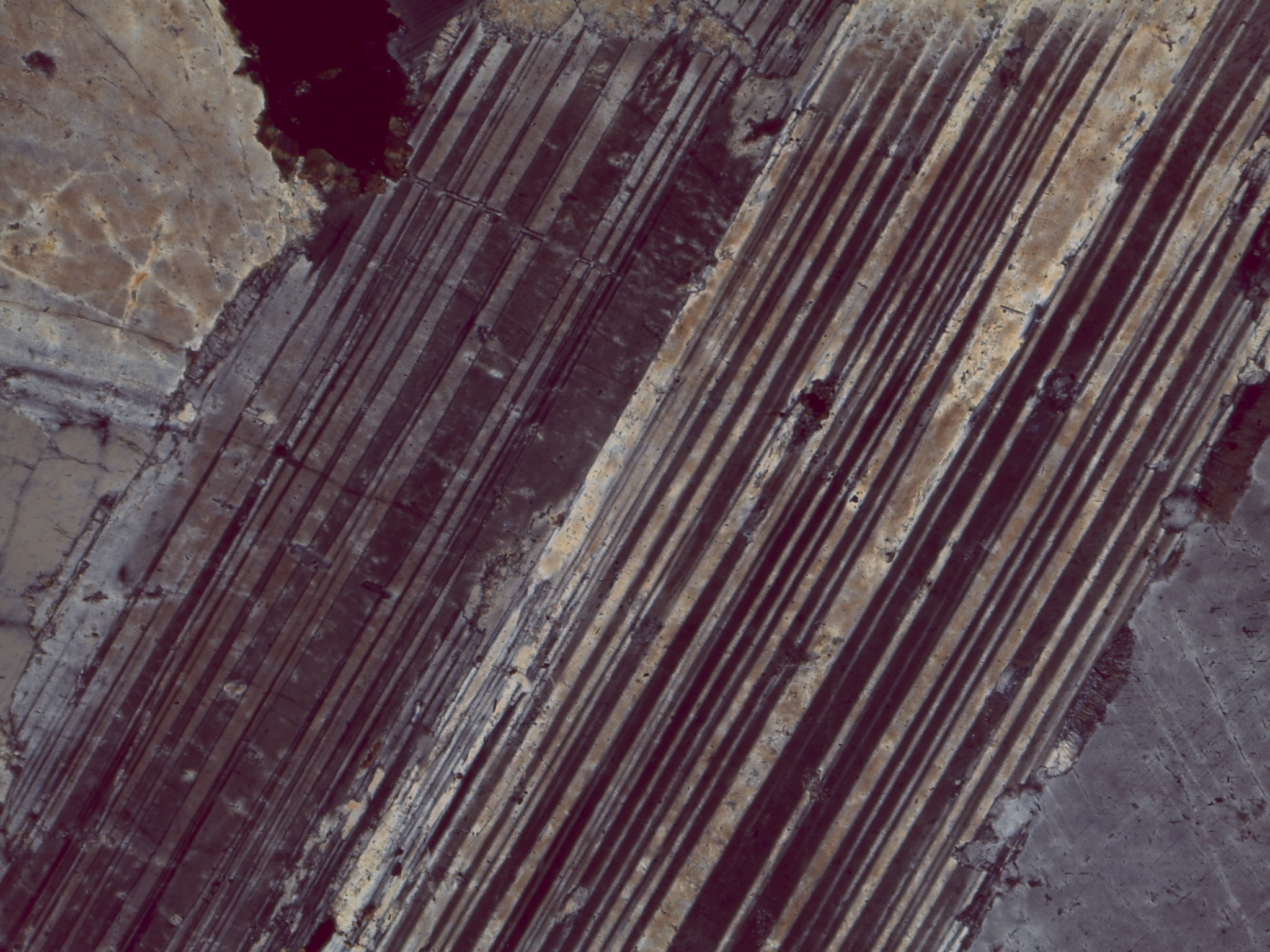Anorthite is the calcic end member of the plagioclase feldspar series.
In thin section, plagioclase feldspar grains often look like they’re sprinkled with dirt (PPL) or tiny confetti (XPL). You can find the explanation on the plagioclase feldspar page.
Anorthite weathers quite readily, so it’s not terribly abundant on Earth. On the moon, however, weathering forces do not pertain; anorthite remains anorthite and constitutes much of the lunar highlands. Apollo 15 astronauts David Scott and Jim Irwin collected a hand sample with an intriguing “little white corner.” The little white corner turned out to be anorthite, and the rock was interpreted to be a piece of the moon’s original crust. Scroll down to the bottom of the page for more, including thin section photos. Thin sections! Of the moon!
Physical Properties |
|
| Chemical formula | CaAl2Si2O8 |
| Class | Tectosilicate 3D frameworks of linked tetrahedra |
| Crystal system | Triclinic |
| Habit | Prismatic Tabular Bladed Cleavable masses Irregular grains |
| Color | White Gray |
| Hardness | 6 to 6.5 |
| Specific gravity | 2.76 |
| Cleavage | Perfect (001), good (010), poor {110} |
| Fracture | Uneven |
| Luster | Vitreous Pearly |
| Transparency | Translucent |
| Streak | White |
Optical Properties |
|
| PPL | Colorless Low relief Non-pleochroic |
| XPL | 1st order grays Polysynthetic/albite twinning (“zebra stripes”) |
| δ | 0.013 |
| Twinning | Polysynthetic/albite
Twins may be wider than the twins in albite, |
| after Perkins, 309 |
Anorthite in Hand Sample
Anorthite is the light mineral in this hand sample.
Scanning electron micrograph of anorthite
Anorthite in Thin Section
Thin Section GigaPans
Anorthite in plane polars
Anorthite in crossed polars


Further Reading
Anorthite at webmineral.com
Anorthite at mindat.org
Anorthite on the Moon
Apollo 15 astronauts David Scott and Jim Irwin collected a hand sample with an intriguing “little white corner” which turned out to be anorthite. Possibly more excited than anyone has ever been about finding a plagioclase feldspar, they bagged it and brought it home. Lunar Sample 15415 was interpreted to be original moon crust and nicknamed Genesis Rock.
NASA’s Astromaterials Acquisition and Curation Office has a synthesis of the analyses performed on 15415. It’s worth a read for the information, and especially for the short transcript at the beginning which captures Scott and Irwin’s giddiness at spotting the rock.
The Lunar Science and Planetary Institute hosts dozens of images of 15415 (and other lunar samples!), including thin sections, stereo views, and in situ photographs.